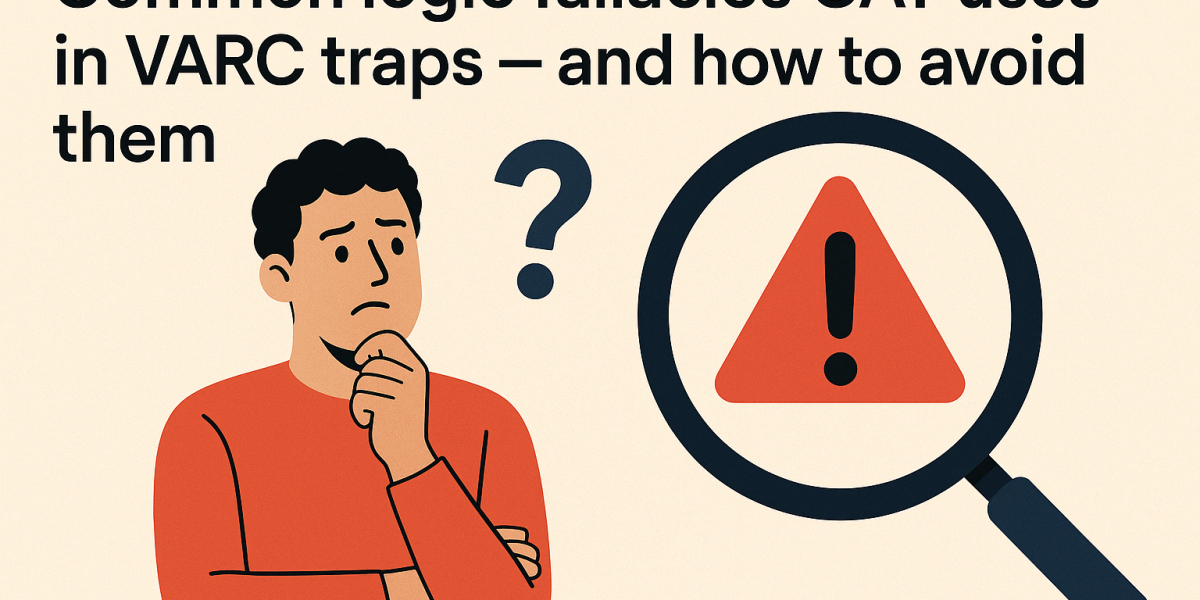As a CAT aspirant in India, one of the most frustrating aspects of the VARC section is falling for answer choices that seem correct but aren't. These trap options are often built on subtle logical fallacies that can mislead even well-prepared students. Understanding these fallacies is essential to avoid losing marks despite understanding the passage. Here's a breakdown of the most common ones used in CAT VARC and how to avoid them. A solid grasp of the CAT exam pattern and the CAT exam syllabus can help you better navigate these traps.
1. Straw man fallacy
What it is: This fallacy distorts the author’s argument into a weaker version and attacks that instead.
How CAT uses it: A trap option may present a misrepresented version of what the author said, making it easier to dismiss or support.
How to avoid it: Always go back to the specific lines in the passage. Ask yourself: "Did the author really say this, or is this a simplified distortion?"
2. False dilemma (either/or thinking)
What it is: This fallacy presents two extreme positions as the only possibilities.
How CAT uses it: A VARC option might suggest that only two outcomes are possible when the passage presents a spectrum or alternative explanations.
How to avoid it: Be suspicious of extreme language in answer choices. Words like "only," "always," or "never" can signal false dichotomies. Understanding how nuanced reasoning works is essential, especially when reviewing the CAT exam syllabus.
3. Circular reasoning
What it is: The conclusion is just a restatement of the premise.
How CAT uses it: Trap answers may repeat part of the passage in a way that appears like reasoning but offers no new insight.
How to avoid it: Eliminate options that merely paraphrase the passage without adding analytical value. With the CAT admit card in hand and the exam approaching, make sure your revision includes identifying such patterns.
4. Post hoc fallacy (confusing correlation with causation)
What it is: Assuming that because one thing followed another, it was caused by it.
How CAT uses it: The test might include options suggesting a causal relationship not supported by the passage.
How to avoid it: Always check whether the passage actually establishes causation or merely observes a sequence. This type of logical flaw often comes up in reading comprehension questions under the CAT exam pattern.
5. Red herring
What it is: Introducing irrelevant information to distract from the main argument.
How CAT uses it: Trap options may sound intelligent but are unrelated to the core idea of the passage.
How to avoid it: Stick to the main idea or tone of the author. If an option seems off-topic, it probably is.
6. Appeal to emotion
What it is: Using emotional manipulation instead of logical reasoning.
How CAT uses it: An option might trigger an emotional response that clouds rational judgment, especially in subjective RCs.
How to avoid it: Focus on logic and evidence presented in the passage, not on how the answer makes you feel.
7. Overgeneralization (hasty generalization)
What it is: Drawing a broad conclusion from limited evidence.
How CAT uses it: An answer may apply a narrow point from the passage too broadly.
How to avoid it: Pay attention to scope. Look out for words like "all," "none," and "every" — they often signal overreach.
Final thoughts
Falling into these logical traps doesn’t mean you're not capable — it often means you need to slow down and verify. The CAT exam pattern is designed to test not just comprehension, but critical thinking. Recognizing and dissecting these logical fallacies can dramatically improve your accuracy in VARC. As you fill out your CAT application form and prepare for the exam day, keep practicing with a fallacy-aware mindset. When you finally download your CAT admit card, make sure you feel confident not just with the syllabus, but with your ability to avoid these traps too.








